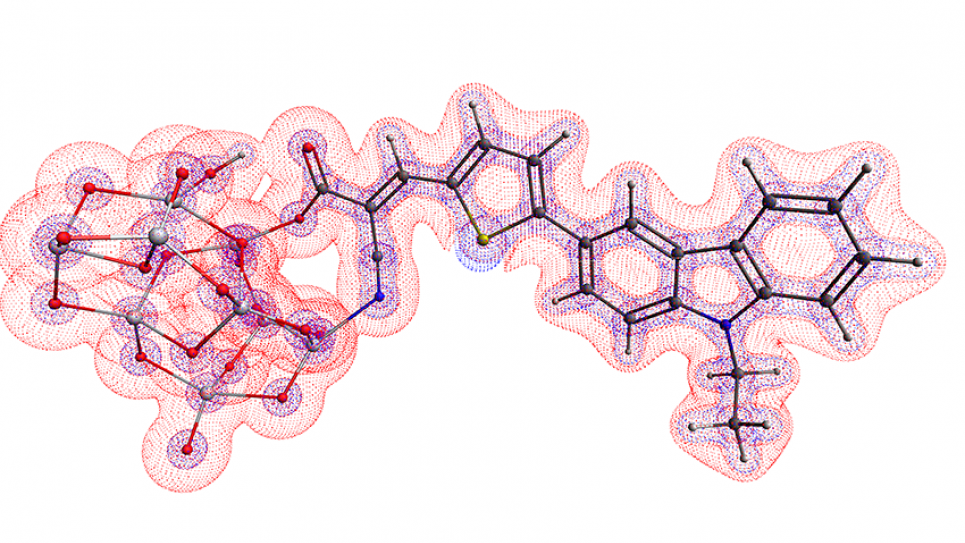
Argonne’s data science program adds new projects, doubles in size
In 2016, the Argonne Leadership Computing Facility (ALCF) started a forward-looking allocation program to support two new types of projects: efforts focused on the extraction of science from various data sources, and ones focused on scaling the underlying data science technology to make use of Leadership Computing resources. This program is known as the ALCF Data Science Program (ADSP). This year, Argonne has awarded computing time to four new projects, bringing the total number of ADSP projects for 2017-2018 to eight. All four of the program’s inaugural projects were also renewed.
The new project award recipients include an industry-based deep learning project; a national laboratory-based cosmology workflow project; and two university-based projects: one that uses machine-learning for materials discovery, and a deep-learning computer science project.
The current projects have made great progress in just the past year alone. On the science side, Jacqueline M. Cole (University of Cambridge) has used ADSP resources to build a large database of organic molecule candidates with desirable structural and electronic qualities by data mining materials’ physical and chemical properties from 300,000 published research articles as part of her Data-Driven Molecular Engineering of Solar-Powered Windows project. Doga Gursoy (Argonne National Laboratory), with his Large-Scale Computing and Visualization on the Connectomes of the Brain project, has streamlined the reconstruction of mice brains utilizing novel imaging and analytical tools to image at the level of individual cells and blood vessels. On the technology side, Fabien Delalondre (École polytechnique fédérale de Lausanne) has been focused on code development and infrastructure setup for his Leveraging Non-volatile Memory, Big Data, and Distributed Workflow Technology to Leap Forward Brain Modeling project. Finally, Taylor Childers’s (Argonne National Laboratory) Advancing the Scalability of LHC Workflows to Enable Discoveries at the Energy Frontier project has deployed Athena, the ATLAS simulation and analysis framework, on ALCF’s Theta supercomputer; and are working to deploy HTCondor-CE, a “gateway” software tool developed by the Open Science Grid to authorize remote users and provide a resource provisioning service.
New ADSP Projects
Enabling Multiscale Physics for Industrial Design Using Deep Learning Networks
Rathakrishnan Bhaskaran, GE Global Research
This project will leverage machine learning and large datasets generated by wall-resolved large-eddy simulations to develop data-driven turbulence models with improved predictive accuracy. The team will apply this approach to turbomachinery such as a wind turbine airfoil, demonstrating the impact that deep learning can have on industrial design processes for applications in power generation, aerospace, and other fields.
Realistic Simulations of the LSST Survey at Scale
Katrin Heitmann, Argonne National Laboratory
To help prepare for the massive amount of data that will be generated by the Large Synoptic Survey Telescope (LSST), this project aims to develop a comprehensive workflow starting from a structure formation simulation to the creation of sky maps with realistic galaxies. The team’s work will lead to one of the largest, most detailed synthetic sky maps ever created, as well as an end-to-end pipeline for LSST data processing and analysis on ALCF supercomputers.
Massive Hyperparameter Searches on Deep Neural Networks Using Leadership Systems
Pierre Baldi, University of California, Irvine
This project will run massive hyperparameter searches on deep neural networks to investigate the fundamentals of deep learning algorithms, helping to improve the use of deep learning on leadership computing systems. The research team also seeks to advance high-energy physics research by applying deep learning methods to improve the detection of exotic particles at CERN’s Large Hadron Collider.
Constructing and Navigating Polymorphic Landscapes of Molecular Crystals
Alexandre Tkatchenko, University of Luxembourg
This project seeks to combine state-of-the-art atomistic quantum simulations and data science methods to enable accurate predictions of novel molecular crystals for alternative energy materials, disease-curing pharmaceuticals, and molecular electronics. The generated data (structures, energies, and properties) and the associated big-data analytics tools developed during this project have the potential to enable major breakthroughs in computational materials discovery.
###
Argonne National Laboratory seeks solutions to pressing national problems in science and technology. The nation's first national laboratory, Argonne conducts leading-edge basic and applied scientific research in virtually every scientific discipline. Argonne researchers work closely with researchers from hundreds of companies, universities, and federal, state and municipal agencies to help them solve their specific problems, advance America's scientific leadership and prepare the nation for a better future. With employees from more than 60 nations, Argonne is managed by UChicago Argonne, LLC for the U.S. Department of Energy's Office of Science.
The U.S. Department of Energy's Office of Science is the single largest supporter of basic research in the physical sciences in the United States and is working to address some of the most pressing challenges of our time. For more information, visit the Office of Science website.